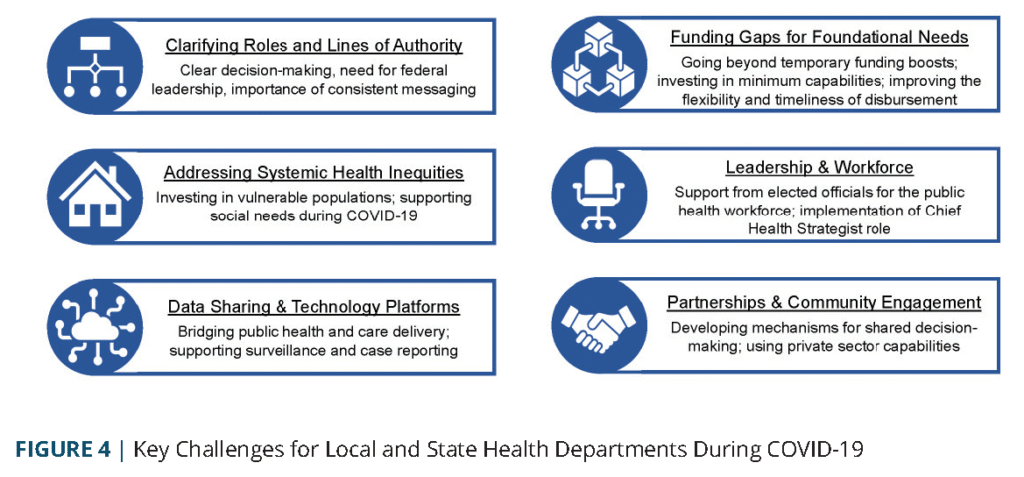Confusion Surrounds CDC Recommendations as States Take Public Health into Their Own Hands
In a recent meeting of the Centers for Disease Control and Prevention (CDC) Advisory Committee on Immunization Practices (ACIP), uncertainty permeated discussions as committee members were unclear on the specifics of their voting agenda. The panel initially rejected a proposed combination vaccine designed for toddlers to protect against measles, mumps, rubella, and chickenpox. However, within minutes, they reversed course, opting to continue funding for the vaccine, only to backtrack on that decision the following day.
Now, Jim O’Neill— the Deputy Secretary of Health and Human Services and acting director at the CDC— faces the task of officially endorsing the committee’s recommendations. Although these recommendations hold significant weight for insurers and federal programs, they are not mandatory, allowing states to implement or disregard them at their discretion.
Regional Health Alliances Emerge
On the West Coast, states including California, Oregon, Washington, and Hawaii have collaborated to form the West Coast Health Alliance. Their initial measure has been to issue unified recommendations regarding vaccinations for COVID-19, flu, and RSV, proactively surpassing ACIP guidelines. Dr. Sejal Hathi from Oregon emphasized, “Public health should never be a patchwork of politics.” Dr. Erica Pan from California articulated their mission as one of fostering unity around scientific integrity while minimizing public confusion.
The alliance is also examining potential coordination of lab testing, data aggregation, and even collective purchasing strategies. “Our intent is to restore trust in science and safeguard the rights of individuals to protect themselves without unnecessary barriers,” added Hathi.
In the Northeast, New York has joined forces with neighboring states to form the Northeast Public Health Collaborative. Governor Kathy Hochul described this initiative as a response to the federal government’s perceived retreat from scientific advisory roles. “Every resident will have access to the COVID vaccine, no exceptions,” she declared, asserting a commitment to complete compliance with vaccination availability.
Expanding Horizons Beyond Vaccines
This collaborative has extended its focus beyond vaccine distribution, creating its own return-to-work guidelines after the disbanding of the CDC’s advisory body on infection control. Workgroups are now active across numerous domains, including vaccines, laboratory management, emergency preparedness, and disease surveillance, highlighting the need for interstate cooperation given the cross-border nature of health threats.
“Infectious diseases don’t respect borders,” noted Dr. Manisha Juthani of Connecticut. “We had to move in the same direction to protect our residents.” The two regional blocs are in regular communication, as Dr. Hathi stated, “We communicate every day. Federal agencies are being weakened, and public health is local, so we must act accordingly.”
The Need for State Action
According to state leaders, these alliances address a void left by federal health authorities. Dr. James McDonald, New York’s health commissioner, commented, “You would think that emerging from a pandemic we would champion public health, but federal leadership seems to be retreating.” Massachusetts health commissioner Dr. Robbie Goldstein echoes this sentiment, affirming that the federal government, historically a unifying force, is losing its grip on health coordination.
Matt Motta, a law professor at Boston University, offered insight into the situation, stating, “States are taking matters into their own hands, sometimes to broaden access to vaccines, and sometimes to restrict it. This could lead to inefficiencies and confusion in public health.”
State Authority and the Risk of Fragmentation
The legal framework surrounding public health has long favored state authority. “Historically, public health crises have been managed at the state level,” explained Wendy Parmet at Northeastern University. States have been enacting vaccine mandates since the 1800s, while federal entities can only provide guidance and funding but not enforce mandates, except in extraordinary situations.
The divergence among states is becoming more pronounced. For instance, Florida’s health authorities are pursuing the elimination of childhood vaccine mandates entirely— a pioneering move that could reopen historical debates about vaccine mandates and public safety. Larry Gostin of Georgetown University warned that this fragmentation could lead to serious public health consequences.
Lessons from the Past
This tug-of-war between state and federal authority is not unprecedented. Past public health crises, such as cholera outbreaks in the 1800s or the polio epidemic in the 1950s, saw states stepping up to implement health measures in the absence of firm federal initiatives. During the COVID-19 pandemic, the limitations of federal authority became particularly clear, as federal coordinators found themselves encouraging states to adopt tailored responses rather than relying solely on broad federal recommendations.
Justice Louis Brandeis famously dubbed states as “laboratories of democracy.” While this may allow for innovation, it also risks public health cohesion. As different states implement varying approaches to health policies, the broader population may bear the consequences, underscoring how interconnected our health systems truly are.
| Region | Health Alliance | Focus Area |
|---|---|---|
| West Coast | West Coast Health Alliance | COVID, Flu, RSV Vaccines |
| Northeast | Northeast Public Health Collaborative | Comprehensive Health Measures |
As states assume more responsibility for public health, they are effectively testing new policies that could either enhance or impede public welfare in the future.

